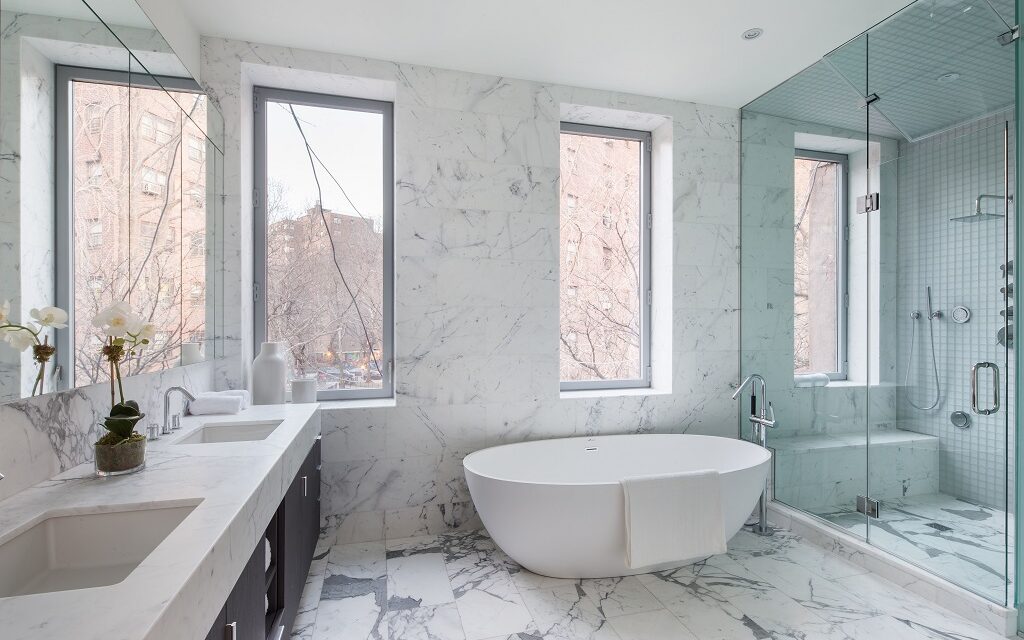Architect Wayne Turett shares his expert tips with Purgula on health- and wellness-oriented design for residential kitchens and baths.
At Purgula, we are always on the lookout to share current practices in the home wellness space, especially when it comes to impactful design. Recently, Wayne Turett, architect and founder of the award-winning architecture and interiors firm The Turett Collaborative, (TTC), shared some insightful wellness design tips with us.
Here is a summary of what we learned.
Table of Contents
- Turett’s Approach to Mindful Design for Improved Health & Wellness
- 3 Kitchen Wellness Design Tips
- 5 Bathroom Wellness Design Tips
- Closing Thoughts on Wellness Design from Purgula
- TTC Resources
Also see:
- Improve Your Sleep with Mitchell Gold + Bob Williams 100% Organic Linen Bedding Collection
- Products to Turn Your Bathroom into a Health & Wellness Spa
- Need Help Falling Asleep? Give These Sleep Tech Products a Try!
- 13 Innovative Examples of Assistive Technology for the Home
- Additional Recommended Home Wellness Reading
Turett’s Approach to Mindful Design for Improved Health & Wellness
With overall well-being a key focus of Turett’s architectural and design business, their team of designers keeps the following question in mind when approaching related wellness projects:
Mindfulness, health, and wellness often go hand-in-hand, but how does that translate to the realm of design?
The firm’s wellness philosophy is that a personalized, mindful approach is the secret to designing a healthy home.
Turett and his firm’s efforts in the wellness space are being inspired by the fact that 3 in 5 Americans admit that their homes are not as healthy as they’d like. Turett’s primary wellness focus has been designing some of the most intimate rooms of the home, specifically kitchen and bath.
Critical to this approach is encouraging clients to tap into their personal rhythms and preferences. These mindful and healthy design techniques can help transform the kitchen and bath into spaces of personal sanctuary for both the mind and body.
3 Kitchen Wellness Design Tips
We admire Turett’s agnostic approach to working with clients on their kitchens. For example, it is not unlikely for the firm to start a kitchen project with the following existential question:
To cook or not to cook?
The firm’s approach to designing kitchens is to understand what their clients like to do in their kitchens and their underlying habits. Are they consummate entertainers that frequently enjoy hosting dinner parties? Are they perhaps busy professionals that view their kitchens as primarily preparing fast and convenient meals, either at home, on the go, or for consumption elsewhere?
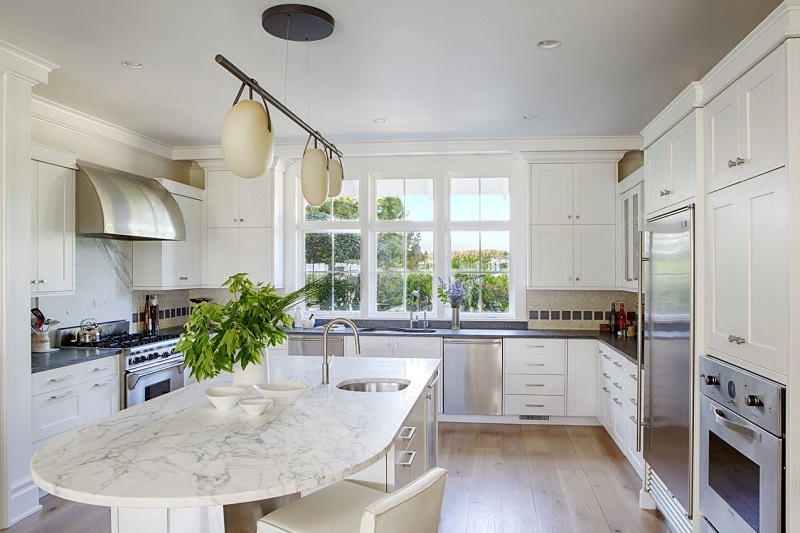
TTC Project: Bridgehampton Home (Photo by Costas Picadas)
Tip #1
Food & Drink: Use Your Eating Habits as a Guide to Creating Your Ideal Kitchen
Clean, filtered water in the kitchen is a major factor for health. Also vital for boosting well-being in the kitchen is nourishment. While your diet and eating habits may seem like an afterthought to your kitchen design, focusing on them upfront will aid in fostering a healthy, long-term kitchen experience.
For example, you may prefer having multiple refrigerators for convenient access throughout hour home (e.g. home gyms; master suites; outdoor patios; home theaters; etc.), as well as for different storage applications (e.g. wine storage; beverage centers; refrigerated drawers; etc.). Providing well-thought-out spaces and storage areas to nourish yourself with nutritious choices should be a key focus when designing the kitchen and its outlying “tentacles”.
This behavioral approach is vital to making an interior space conducive to the lifestyle you wish to pursue and enjoy. Turett’s approach makes us think anew, imagining homeowners asking upfront a newer, more constructive type of design question:
How can we design our kitchen to help us live a healthier, more nutritional lifestyle?
Though this is admittedly a challenging question, here are related requirements that would help the collaborative efforts between the client and designer:
- Easy access for quality hydration throughout the home
- Easy access to storage that will prolong the lifespan of refreshments, fruit and vegetables
- A workflow layout that is conducive for preparing & cooking several meals, once or twice a week, that are packaged for reheating during non-cooking days
- Smart devices and appliances, including media players, that will help residents learn, perfect and repeat healthy, convenient and tasty recipes
Tip #2
Lighting: Bright Lighting is Important for Maintaining Cleanliness in the Kitchen
Maintaining a clean kitchen is significantly aided by having ample bright utility lighting. In other words, the easier you can see surface areas and appliances, the easier it will be to keep your kitchen properly clean and sanitized.
If the dining area is combined or adjacent to the kitchen, a dimmer system can be used to allow the seating area to have an ambiance that is a bit darker and more relaxed, if desired.
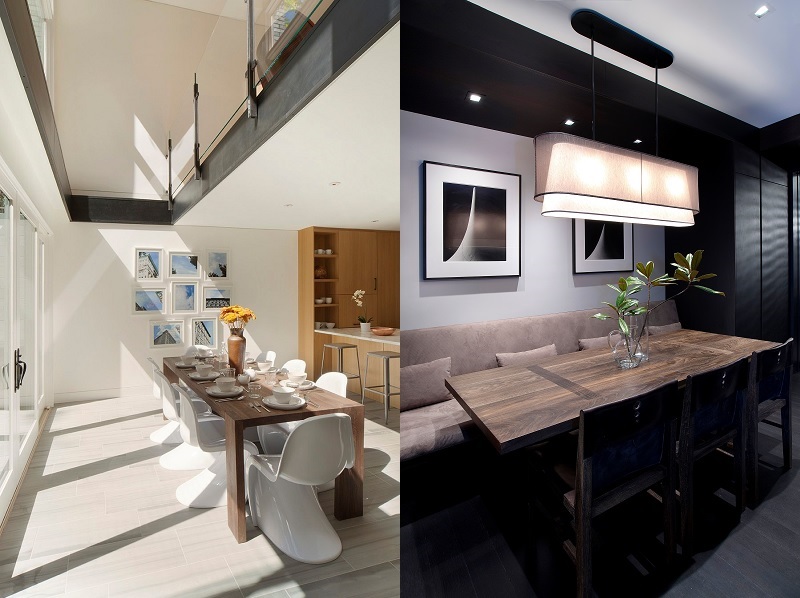
TTC Projects: Washington Street Apartment (Left), Park Avenue Apartment (Right)
Also see:
Tip #3
Ventilation: ERV Systems Can Help Remove Food Smells & Promote Clean Air
Ample airflow is imperative for a healthy kitchen. An exhaust system that removes food smells is the most common solution for this need. However, an ERV (or Energy Recovery Ventilator) is another way of actively filtering air that enters the kitchen by drawing in clean, fresh air into a home.
Deciding on the best HVAC system to implement in a kitchen can also be guided by climate. Overall, air flow in a kitchen plays a role in your health, well-being, and mood.
When hosting a dinner party with imperfect ventilation, for example, your guests may detect hints of the previous night’s dinner which may clash with the evening’s scheduled courses.
Also see:
5 Bathroom Wellness Design Tips
A bathroom is highly personal – we’re all aware of the nuances and specificity that come with loving (or hating) your bathroom. When you’re investing in a bathroom that is customized to your needs, you’ll want to make sure to consider all details — even contemplating your daily showering and personal grooming habits. No usage scenario should be overlooked when planning a major investment in a new bathroom.
- Tip #4 – Shower & Bathtub
- Tip #5 – Heating & Cooling
- Tip #6 – Lighting
- Tip #7 – Ventilation
- Tip #8 – Comfort
Tip #4
Shower & Bathtub: Tailor Shower & Bath Features to Your Personal Preferences
Determining your preferences for water pressure, water filtering, and shower-head style is essential to giving yourself an elevated, personalized experience in a new bathroom. Your bathtub should not just fill quickly and adjust temperature easily, but it should fit your body safely and comfortably. Safe ingress and egress of the tub should also be considered.
Personal Tip from Purgula: when shopping for a bathtub, be sure to sit in it on the showroom floor! Do not be bashful! Your usage scenario of a tranquil, spa-relaxation chamber should be well researched.
High quality showers and bathtubs are not just about having luxurious forms of hygiene, but should also be viewed as invaluable therapeutic investments. Both the young and physically active, as well as older residents, should leverage showers and bathtubs to help their bodies recover on a daily basis.
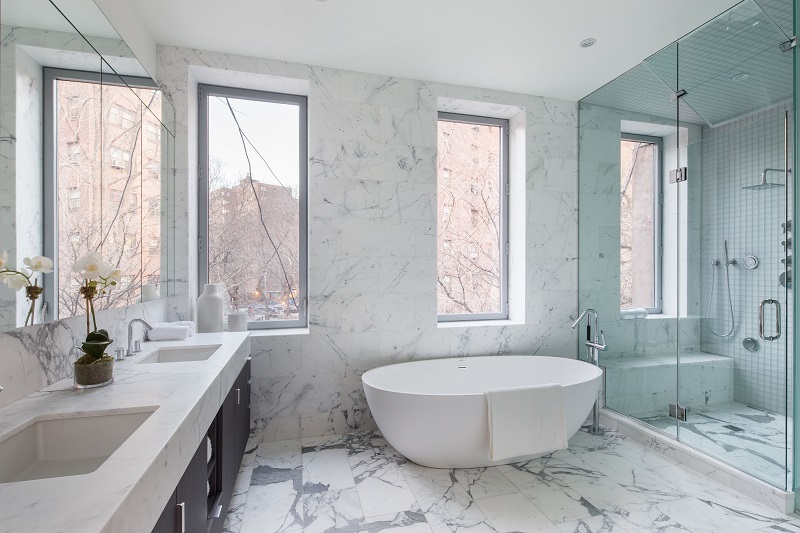
TTC Project: West 25th Street Apartment
Also see:
Tip #5
Heating & Cooling: Appropriate Heating & Cooling Elements Can Promote Positive Sensory Experiences
You may also prefer a heated floor in the winter or air conditioning for warmer months, in the bathroom to make getting ready in the morning a bit more comfortable. Since the bathroom is often the first place you visit in the morning, a positive or negative sensory experience can affect the trajectory of your mood for the day.
When investing in one’s master bathroom, we encourage others to aspire towards a spa-like experience. This approach definitely involves creating an inviting atmosphere where you will enjoy spending extended periods of time, no matter the time of day, or time of year.
Tip #6
Lighting: Adjustable Lighting can Help Promote Both Calmness & Practicality
Adjustable lighting is always best in a bathroom. You may prefer to create a slightly darker setting while showering, or a brighter setting when sitting by the mirror. Having a dimmer system allows for atmospheric lighting or bright, clean lighting, both of which can evoke certain moods.
Bathroom lighting between 2700 to 3000 kelvin degrees for residential bathrooms is often the best range for creating realistic lighting – meaning the right color will mimic one’s appearance outside in daylight. If the bathroom is where you apply your makeup or perform daily grooming, it may be of importance to ensure natural light from a window is available.
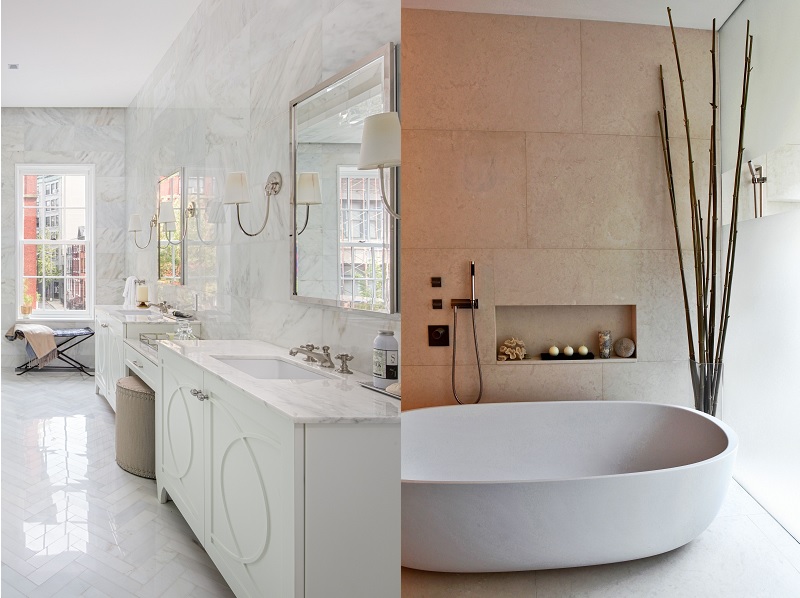
TTC Project: Waverly Street Apartment (Left), Charles Street Apartment (Right)
Also see:
Tip #7
Ventilation: Proper Ventilation Helps Keep the Bathroom Fresh
A good exhaust system is key in a bathroom to remove any humidity and odors. A window for fresh air, if possible, is also important for maintaining a healthy bathroom, free of mold and mildew.
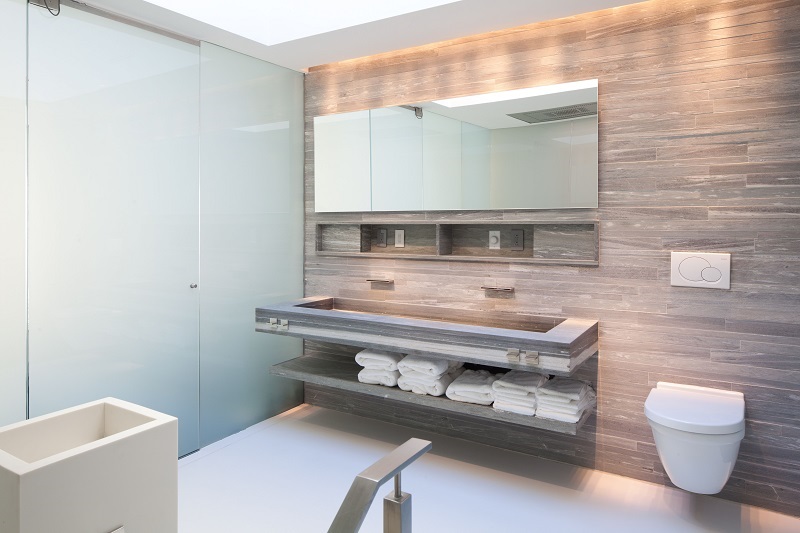
TTC Project: 73rd Street Townhouse
Tip #8
Comfort: Use Design to Facilitate Peace & Comfort
Design has the power to facilitate happiness and peace at home – radiant heat in bathroom floors can signal relief, while in-shower speaker systems can be used to lift moods.
Everything is related to the bigger picture, and details matter.
While the bathroom may not be the obvious choice for mental health, the shower or bath is quite often a place of mediation. Getting familiar with your own preferences can help make the shower a space that caters to relaxation. Some prefer a steam shower, massaging shower-heads, or even the addition of a sauna in their bathroom.
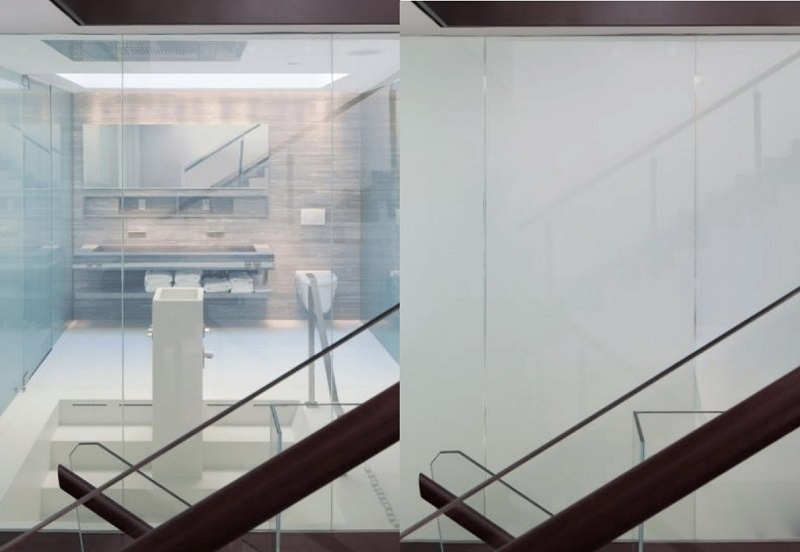
TTC Project: 73rd Street Townhouse
This bathroom features shower glass that can be turned from clear to translucent at the touch of a switch, creating a spa-like experience in the owner’s home.
Also see:
Closing Comments on Wellness Design from Purgula
We are always happy to see established architectural and interior designs, such as TTC, continue to innovate on applying design to foster healthier and happier homes. We foresee a not-so-distant future where a majority percentage of homeowners will align their design needs with overall wellness goals. For example, we can envision near-future survey results from wellness designers stating something along the lines of:
“over half of our clients are coming to us with the primary need to transform their residences into healthier and happier homes”
In the meantime, there remains a strong need to educate homeowners on how their design choices and budget priorities play a critical part in their overall personal wellness and enjoyment of their homes.
We encourage innovative design firms in the residential wellness space, like Turett, to push the envelope of wide-ranging possibilities. We believe an increasing number of both younger and aging homeowners will become earlier adopters of emerging wellness solutions, once they learn of the many personalized possibilities ideal for their unique lifestyles and situations.
TTC Resources
- The Turett Collaborative (TTC) Website
- TTC Residential Projects
- TTC Blog
- TTC Instagram Account
- Wayne Turett Bio
Additional Recommended Home Wellness Reading
- Products to Turn Your Bathroom into a Health & Wellness Spa
- 13 Innovative Examples of Assistive Technology for the Home
- Need Help Falling Asleep? Give These Sleep Tech Products a Try!
- Best Try Before You Buy Experiential Retail Programs for the Home
- How to Resolve Soundproofing Issues in Your Condo or Shared-Wall Home
- Need an Aging In Place Specialist? Look for These Certifications!
- Aging In Place Technology for Today and Tomorrow
- Never Thought You’d Live in a Multigenerational Home? Think Again!
- How to Create an Allergy-Free Environment in Your Home
- UV-C Products to Make Your Home Healthier & Virus Free
| Purgula is reader-supported. When you click on links to other sites from our website, we may earn affiliate commissions, at no cost to you. If you find our content to be helpful, this is an easy way for you to support our mission. Thanks! Learn more. |

